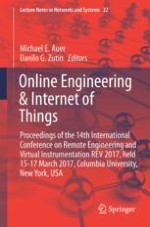This book discusses online engineering and virtual instrumentation, typical working areas for today’s engineers and inseparably connected with areas such as Internet of Things, cyber-physical systems, collaborative networks and grids, cyber cloud technologies, and service architectures, to name just a few.
It presents the outcomes of the 14th International Conference on Remote Engineering and Virtual Instrumentation (REV2017), held at Columbia University in New York from 15 to 17 March 2017. The conference addressed fundamentals, applications and experiences in the field of online engineering and virtual instrumentation in the light of growing interest in and need for teleworking, remote services and collaborative working environments as a result of the globalization of education. The book also discusses guidelines for education in university-level courses for these topics.
